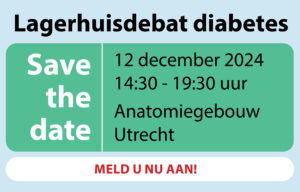Sodium–glucose cotransporter 2 (SGLT2) inhibition causes an increase in endogenous glucose production (EGP). However, the mechanisms are unclear. We studied the effect of SGLT2 inhibitors on EGP in subjects with type 2 diabetes (T2D) and without diabetes (non-DM) in kidney transplant recipients with renal denervation.
Fourteen subjects who received a renal transplant (six with T2D [A1C 7.2 ± 0.1%] and eight non-DM [A1C 5.6 ± 0.1%) underwent measurement of EGP with [3-3H]glucose infusion following dapagliflozin (DAPA) 10 mg or placebo. Plasma glucose, insulin, C-peptide, glucagon, and titrated glucose-specific activity were measured.
Following placebo in T2D, fasting plasma glucose (FPG) (143 ± 14 to 124 ± 10 mg/dL; P = 0.02) and fasting plasma insulin (12 ± 2 to 10 ± 1.1 μU/mL; P < 0.05) decreased; plasma glucagon was unchanged, and EGP declined. After DAPA in T2D, FPG (143 ± 15 to 112 ± 9 mg/dL; P = 0.01) and fasting plasma insulin (14 ± 3 to 11 ± 2 μU/mL; P = 0.02) decreased, and plasma glucagon increased (all P < 0.05 vs. placebo). EGP was unchanged from baseline (2.21 ± 0.19 vs. 1.96 ± 0.14 mg/kg/min) in T2D (P < 0.001 vs. placebo). In non-DM following DAPA, FPG and fasting plasma insulin decreased, and plasma glucagon was unchanged. EGP was unchanged from baseline (1.85 ± 0.10 to 1.78 ± 0.10 mg/kg/min) after DAPA, whereas EGP declined significantly with placebo. When the increase in EGP production following DAPA versus placebo was plotted against the difference in urinary glucose excretion (UGE) for all patients, a strong correlation (r = 0.824; P < 0.001) was observed.
Renal denervation in patients who received a kidney transplant failed to block the DAPA-mediated stimulation of EGP in both individuals with T2D and non-DM subjects. The DAPA-stimulated rise in EGP is strongly related to the increase in UGE, blunting the decline in FPG.


